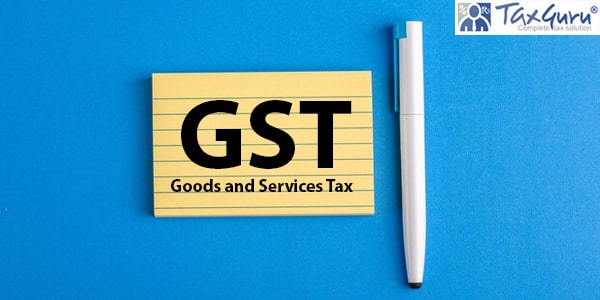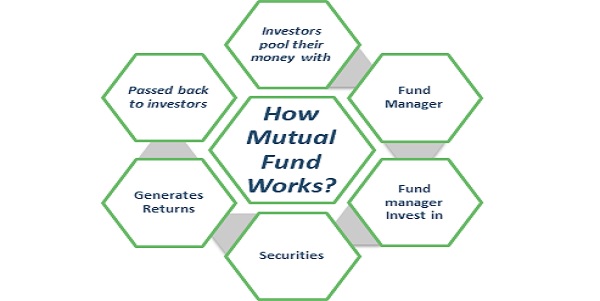Case Law Details
November, 17th 2008
IN THE SUPREME COURT OF INDIA
CIVIL APPELLATE JURISDICTION
CIVIL APPEAL NO. OF 2008
(Arising out of SLP (Civil) No.12699 of 2007)
Commissioner of Income Tax, Rajkot Versus M/s Gujarat Siddhi Cement Ltd.
CORAM: JUSTICE Dr. ARIJIT PASAYAT &
JUSTICE Dr. MUKUNDAKAM SHARMA
Date of Judgment: 17th October, 2008
J U D G M E N T
Dr. ARIJIT PASAYAT J.
1. Leave granted.
2. Challenge in this appeal is to the judgment of a Division Bench of the Gujarat High Court dismissing the appeal filed by the present appellant. The appeal was filed under Section 260A of the Income Tax Act, 1961 (in short the `Act’). The question relates to the effect of Section 43A of the Act. The effect of fluctuation of foreign exchange rate resulting in increase of cost of plant and machinery was the dispute.
3. Respondent (hereinafter referred to as the `assessee’) claimed increased amount as deduction as investment allowance on account of increase in the cost of plant and machinery on account of exchange rate fluctuation. The assessing officer disallowed the claim on the ground that plant and machinery in respect of which there has been increase were installed in the earlier years. Therefore, there is no scope for provision for investment allowance in the year under assessment. It referred to the letter of the assessee dated IT/JAM/95-96/1226 dated 16.2.1996 making such claim. The assessee preferred an appeal before the Commissioner of Income Tax (Appeals) (in short `CIT(A)’). The disallowance made by the assessing officer was upheld by the CIT(A) on the ground that no arguments were advanced and no factual details were furnished regarding the alleged fluctuation on account of foreign exchange rate. The matter was carried in further appeal by the assessee before the Income Tax Appellate Tribunal, Rajkot (In short `Tribunal’) which allowed the claim placing reliance on a decision of the Gujarat High Court in Commissioner of Income Tax v. Gujarat Fertilizers (2003 (259) ITR 526). Revenue preferred an appeal under Section 260A of the Act before the High Court. By the impugned judgment the High Court upheld the view of the Tribunal referring to the judgment of Gujarat Fertilizers’s case (supra).
4. In support of the appeal, learned counsel for the appellant submitted that the subject matter of controversy is covered by a decision of this Court in Commissioner of Income Tax, Madras v. Lucas TVS Ltd, Padi Chennai (2008 (1) SCC 674). He also relied on the decision in Commissioner of Income Tax v. Arvind Mills (1992 Supp (2) SCC 190).
5. Learned counsel for the assessee-respondent on the other hand submitted that Lucas TVS’s case (supra) related to an entirely different question and, therefore, the view expressed by the High Court does not suffer from any infirmity.
6. The assessment year in the present case is 1993-94 relating to the previous year 1992-93. In terms of Section 43A(1) the liability decreases or increases due to foreign exchange rate in the previous year. If that is not the position, there is no application of Section 43A(1). Section 32A deals with investment allowance. Section 43A deals with special provisions consequential to changes in rate of exchange of currency. It is to be noted that Arvind Mills’s case (supra) did not deal with investment allowance under Section 32A of the Act. It in fact related to “development rebate” under Section 33. It is to be noted that Section 43A in the present form was substituted by the Finance Act, 2002 w.e.f. 1.4.2003. Prior to its substitution Section 43A as inserted by the Finance Act, 1967 w.e.f. 1.4.67 and amended by Direct Tax Laws (Amendment) Act, 1987 w.e.f. 1.4.1989 contained sub-section (2). The said sub-section as it stood at the relevant point of time clearly stated that the provisions of sub-section (1) shall not be taken into account in computing the actual cost of assets for the purpose of deduction on account of development rebate under Section 33.
7. In Arvind Mills’s case (supra) it was observed inter-alia as follows:
“13. It may also be mentioned that the Ministry of Finance, by its letter of 4th January, 1967, sometime earlier to the enactment of Section 43A had clarified its stand on certain points raised by the Federation of Indian Chambers of Commerce and Industry. The first two paragraphs of this letter have a bearing on the issue before us and may be extracted here:
“1. As regards the point that the additional rupee liability in regard to assets imported before but installed after the date of devaluation would, in any case, be treated as forming part of the actual cost of the asset for the purpose of allowance of development rebate under the existing law the interpretation of the Government on legal position is different. It is that the actual cost of the asset in such a case will be reckoned at the cost on the date on which the legal ownership in the assets passed to the assessee, i.e., the cost as calculated in accordance with the pre-devaluation rate of foreign exchange.
2. The Government agrees that for the purpose of the calculation of depreciation allowance, the cost of capital assets imported before the date of devaluation should be written off to the extent of the full amount of the additional rupee liability incurred on account of devaluation and not what is actually paid from year to year. The proposed legal provision in the matter is intended to be framed on this basis.” (Emphasis Added)
xx xx xx
18. We also find it difficult to find substance in the second argument of Sri Salve that Sub-section (1) was inserted only to define the year in which the increase or decrease in liability has to be adjusted. It is no doubt true that, but for the new section, various kinds of arguments could have been raised regarding the year in which such liability should be adjusted. But, we think, arguments could also have been raised as to whether the actual cost calls for any adjustment at all in such a situation. It could have been contended that the actual cost can only be the original purchase price in the year of acquisition of the asset and that, even if there is any subsequent increase in the liability, it cannot be added to the actual cost at any stage and that, for the purposes of all the statutory allowances, the amount of actual cost once determined would be final and conclusive. Also Section 43A provides for a case in which, as in the present case, the assessee has completely paid for the plant or machinery in foreign currency prior to the date of devaluation but the variation of exchange rate affects the liability of the assessee (as expressed in Indian currency) for repayment of the whole or part of the monies borrowed by him from any person directly or indirectly in any foreign currency specifically for the purposes of acquiring the asset. It is a moot question as to whether in such a case, on general principles, the actual cost of the assessee’s plant or machinery will be the revised liability or the original liability. This is also a situation which is specifically provided for in the section. It may not, therefore, be correct to base arguments on an assumption that the figure or actual cost has necessarily to be modified for purposes of development rebate or depreciation or other allowances and that the only controversy that can arise will be as to the year in which such adjustment has to be made. In our opinion, we need not discuss or express any concluded opinion on either of these issues. As we said earlier, there is no need to speculate on all the problems that might have arisen if Section 43A had not been there because the statute had resolved these problems. It lays down, firstly, that the increase or decrease in liability should be taken into account to modify the figure of actual cost and secondly that such adjustment should be made in the year in which the increase or decrease in liability arises on account of the fluctuation in the rate of exchange.
19. The result of the above discussion is that once the language of Sub-section (1) is attracted to a particular case, Sub-section (1) applies. Once Sub-section (1) is attracted, its application is excluded, qua development rebate, by the operation of Sub- section (2).
xx xx xx
22. Nor is there any in-appropriateness of statutory language as urged. As we have discussed above, the provisions of Sub- section (1) apply to the present case and the increased liability should be taken as ‘actual cost’ within the meaning of Section 43A(1). All allowances including development rebate or depreciation allowance or the other types of deductions referred to in the sub-section will therefore have to be based on such adjusted actual cost. But then Sub-section (2) intercedes to put in a caveat. It says that the provisions of Sub-section (1) should not be applied for purposes of development rebate. The effect is that the adjusted actual cost is to be taken as the actual cost for all purposes other than for grant of development rebate. Read thus, there is no difficulty in the application of the language of the section to the present case. There is no inappropriateness of language either in Sub-section (1) or in Sub-section (2). The language used is quite appropriate and meets the situation fully.
23. For the reasons discussed above, we are of the opinion that the language of the provision is perfectly clear. It cannot be interpreted in a restrictive manner as contended for by the learned Counsel for the assessee. In our opinion, it is a clear requirement of the statute that, for purposes of development rebate, any increase or decrease in the actual cost consequent on fluctuations in exchange rate should not be taken into account. It may be that the legislature intended to give a different treatment to development rebate from depreciation and other allowances because the allowance of development rebate can result in an assessee claiming allowances exceeding the original cost. It may be that the legislature thought that, though development rebate was intended to promote development of industries, this could not be allowed at the cost of the foreign exchange resources of the country which are also depleted when there is an increase in liability due to devaluation of the currency. It is unnecessary to attribute any particular reason for the provision when the language of the section is otherwise plain and unambiguous. We do not think that, in face of the language of Sub-section (2), it would be right to permit the assessees to claim development rebate on the increased cost. We, therefore, allow the appeal and uphold the action of the assessing officer granting development rebate to the assessee only in respect of a sum of Rs. 52.48 lakhs and not on Rs. 61 lakhs on the basis of which it was claimed. Having regard, however, to the fact that the assessees had succeeded before all the High Courts we make no order regarding costs.”
8. In the said case the issue related to the development rebate.
9. On a bare reading of the provision i.e. Section 43A(1) the position is clear that it relates to the fluctuation in the previous year in question. If any extra benefit is taken the same has to be taxed in the year when the liability is reduced as provided in terms of Section 41(1)(a) Explanation 2. Therefore, whenever there is fluctuation in any previous year, Section 43A (1) comes into play. Section 43A(1) as it stood at the relevant point of time reads as follows:
“43A. Special provisions consequential to changes in rate of exchange of currency- (1) Notwithstanding anything contained in any other provision of this Act, where an assessee has acquired any asset from a country outside India for the purposes of his business or profession and, in consequence of a change in the rate of exchange at any time after the acquisition of such asset, there is an increase or reduction in the liability of the assessee as expressed in Indian currency for making payment towards the whole or a part of the cost of the asset or for repayment of the whole or a part of the moneys borrowed by him from any person, directly or indirectly, in any foreign currency specifically for the purpose of acquiring the asset (being in either case the liability existing immediately before the date on which the change in the rate of exchange takes effect), the amount by which the liability aforesaid is so increased or reduced during previous year shall be added to, or, as the case may be, deducted from, the actual cost of the asset as defined in clause (I) of section 43, or the amount of expenditure of a capital nature referred to in clause (iv) of sub- section (1) of section 35 or in section 35A or in clause (ix) of sub-section (1) of section 36, or, in the case of a capital asset (not being a capital asset referred to in section 50), the cost of acquisition thereof for the purposes of section 48, and the amount arrived at after such expenditure or a capital nature or, as the case may be, the cost of acquisition of the capital asset as aforesaid.
Explanation 1- In this sub-section, unless the context requires:-
(a) “rate of exchange” means the rate of exchange determined or recognised by the Central Government for the conversion of Indian currency into foreign currency or foreign currency into Indian currency;
(b) “foreign currency” and “Indian currency” have the meanings respectively assigned to them in section 2 of the Foreign Exchange Regulation Act, 1947 (7 of 1947).
Explanation 2- Where the whole or any part of the liability aforesaid is met, not by the assessee, but directly or indirectly, by any other person or authority, the liability so met shall not be taken into account for the purposes of this sub-section.
Explanation 3- Where the assessee has entered into a contract with an authorized dealer as defined in section 2 of the Foreign Exchange Regulation Act, 1947 (7 of 1947), for providing him with a specified sum in a foreign currency on or after a stipulated future date at the rate of exchange specified in the contract to enable him to meet the whole or any part of the liability aforesaid, the amount, if any, to be added to, or deducted from, the actual cost of the asset or the amount of expenditure of a capital nature or, as the case may be, the cost of acquisition of the capital asset under this sub-section shall, in respect of so much of the sum specified in the contract as is available for discharging the liability aforesaid, be computed with reference to the rate of exchange specified therein.”
10. After the substitution by Finance Act, 2002 w.e.f. 1.4.2003 the position is quiet different.
11. In the instant case as rightly submitted by learned counsel for the revenue, CIT(A) recorded to a categorical finding that no argument was advanced and no details were given.
12. In the aforesaid background we feel that it would be appropriate to grant opportunity to the assessee to establish the factual position relating to fluctuation in foreign exchange rate. For that limited purpose the matter is remitted to the Tribunal to consider whether assessee is justified in claiming deduction in the background of Section 43A(1) as it stood then, keeping in view the legal position as highlighted above.
13. The appeal is disposed of accordingly.




















